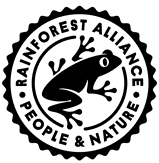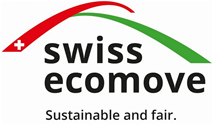For IP professionals
This is the portal for professionals working in the field of intellectual property. Here you'll find direct access to all necessary resources.
Quick links
Trade marks and sustainability: protection for ‘green’ trade marks
Companies can market their goods and services with the help of designations, logos or slogans relating to environmental protection. They can obtain protection for these by registering them as trade marks with the IPI or abroad. If an application for trade mark protection involves a designation, logo or slogan relating to environmental protection or sustainability, the trade mark is known as a green trade mark. Likewise, companies might want to use an ecolabel to inform their consumers that their goods or services meet specific ecological norms or sustainability standards. This kind of label can be protected as a trade mark and can also be considered a green trade mark. This page gives you useful information about protecting green trade marks.
Trade marks vs. green trade marks
According to its legal definition, a trade mark is a sign capable of distinguishing the goods or services of one undertaking from those of other undertakings. By protecting signs as trade marks, proprietors obtain the exclusive right to use them to distinguish their goods or services. They can transfer this right by issuing licences, and they can forbid third parties from using their trade mark or signs that might be confused with their trade mark. There are various kinds of trade marks. They may consist of individual or combined words, slogans, letters, numbers or figurative representations. There are also other special types of trade marks (see the IPI’s pocket guide ‘Envisioned. Created. Protected.’).
The expression ‘green trade mark’ has only recently come into use in intellectual property publications. It is not a legal term. Green trade marks are not a type of trade mark in the legal sense. What is particular about them is that they contain words, slogans and figurative representations that refer to environmental protection or sustainability on their own or in combination. That is why publications about the topic of green trade marks (e.g. Maggiore 2021 and Park 2022) sometimes link them to corporate communication about environmental protection. You can read more about ‘green advertising’ in Sylvia Anthamatten’s article in sic! No 1/2024).
Conditions for protecting green trade marks
Being in the public domain
Green trade marks are normal trade marks and are thus by definition distinctive signs. The distinctiveness is gauged based on the overall impression made by the trade mark. Signs with no distinctive character can generally not be protected as trade marks. Signs that consist exclusively of commonplace, descriptive or laudatory components on their own or in combination lack distinctiveness too. This means that a sign that solely comprises an obvious reference to the positive or neutral environmental impact made by the goods or services in question cannot be protected as a trade mark because it is a descriptive term (Part 5 No 4.4.1 and 4.4.2 Trade Mark Guidelines of the IPI). A trade mark can also be rejected if it consists of no more than general advertising assertions for the offering or of a slogan with no distinctive character (Part 5 No 4.4.3 and 4.4.5 Trade Mark Guidelines).
A green trade mark can nonetheless be protected if it combines elements that refer to environmental protection or sustainability with other elements, such as words, letters, numbers or figurative elements so that the sign is distinctive overall.
Example of a sign rejected due to a lack of distinctiveness:
Examples of signs that were accepted as being distinctive:
Obvious risk of deception
A trade mark must not be deceptive. In other words, it must not contain any deceptive information about the origin, quality or characteristics of the goods or services. In practice, the IPI does not examine whether the information included in the trade mark corresponds to the truth. This also applies for environment-related information in green trade marks. The IPI does not examine the actual characteristics of the trade mark applicant either. According to the IPI’s practice, there is no risk of deception if the sign is used correctly for the goods and/or services for which it is registered. In other words, the IPI will only refuse to register any sign that may be deceptive if this is obviously the case. As a result, it is extremely rare for green trade marks to be rejected because of the risk of deception. The IPI’s standard practice is to reject signs with a ‘BIO’ (organic) component for synthetic goods due to their deceptive nature, but to approve such signs as a matter of course for agricultural products (Part 5 No 5 Trade Mark Guidelines).
Guarantee marks and ecolabels: specific requirements of guarantee marks
Companies might want to use an ecolabel to inform their consumers that their goods or services meet specific ecological norms or sustainability standards. According to a press release (in German and French) by the State Secretariat for Economic Affairs, these labels should enable customers to consciously purchase eco-friendly, sustainably produced goods. Ecolabels can be protected by their proprietors as trade marks. Swiss law recognises several kinds of trade marks, which are subject to different conditions. Proprietors of labels need to decide on one of these types of trade marks, depending on the particular features of their labels. One particular category is the guarantee mark, which offers significant advantages for the protection of ecolabels under trade mark law.
Guarantee marks are particularly useful for guaranteeing common characteristics of goods or services from different companies. These include quality (clothes made of cotton), geographical origin (Swiss products, products from Valais), the production type (products from organic or animal-friendly farming; environmentally friendly manufacture) and technical characteristics (products that need a specific kind of expertise or that come from fair trade). To obtain a guarantee mark, an application for registration must be submitted together with regulations governing the use of the mark. The regulations must set out the common characteristics of the goods and services for which the sign will be used as a trade mark. These common characteristics must be objective. Proprietors of guarantee marks need to supervise compliance with these common characteristics (Art. 21 para. 1 of the Trade Mark Protection Act, TmPA). The regulations governing the use of the mark must also set out the control mechanisms and appropriate sanctions for unauthorised use of the trade mark (Art. 23 para. 2 TmPA; Part 5 No 10.3 Trade Mark Guidelines).
For a sign to be registered as a guarantee mark, specific conditions must thus be met. Consequently, the guarantee mark becomes a protective instrument that fully meets the expectations of consumers and the markets regarding the use of ecolabels in trade.
Examples of accepted guarantee marks:
 | CH 791882, class 3, 5, 16 - 17, 20, 29 – 32. |
 | CH 773790, class 35-36,41-42 |
Documents & links
- Federal Act on the Protection of Trade Marks and Indications of Source (TmPA)
- Trade Mark Guidelines of the IPI (in German, French and Italian)
- Label Promotion by the Swiss Confederation (in German and French)
- sic! 1 | 2024: article on green advertising (in German)
- INTA Article on Green Trade marks
- WIPO MAGAZINE Article on Green Trade marks
- EUIPO Study on green EU Trade marks
News
26.08.2025 | Media release, Law and policy, News
IP dialogue to resume between Switzerland and India
...more
20.06.2025 | Media release, Law and policy, Copyright, News
Related right for the media: Federal Council approves dispatch on amended Copyright Act
...more



